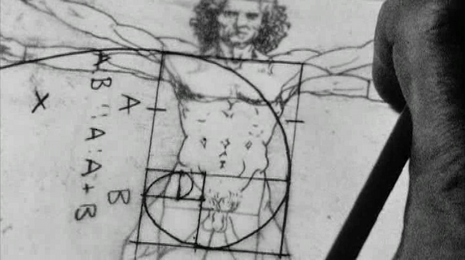Pi: mathematics, madness and mysticism
For this week’s cult conversation, James Dickinson delves into the twisted psyche of Director Darren Aronofsky’s debut

A complete lack of money can sometimes be a good thing. It forces a filmmaker to pay close attention to storytelling and elicits creative solutions to problems. It also frees a director from commercial pressure – when you’re making a film for nobody and for nothing, you’re free to let your imagination go wild.
With a shoestring budget of $68,000, Aronofsky created Pi, a film that masterfully intertwines the diverse themes of mathematics, madness and Jewish mysticism. Shot in high-grain black and white, littered with handheld camera shots, and to screeching drum-and-bass, the film packs an aesthetic punch despite the low budget.
These aesthetic choices depict a world full of slight irregularities and surreal moments that make it a universe removed from our own. Right from the get-go, the visual cues help immerse us in the perspective of our unreliable narrator, anti-social number theorist Max Cohen, who suffers from debilitating headaches, nosebleeds and paranoia.
Motivated by the thrill of a challenge, Max is searching for patterns in the stock market. Early scenes show Max’s computer picking a single stock at an eighth of its current value, printing off a 216-digit number, then crashing. Max thinks nothing of the incident until checking the financial news the next day, when he discovers the significance of the number – he has managed to predict the stock exchange.
One of the most brilliant features of Pi is the plot’s core of plausibility. Right from the beginning, Max tells us of the three assumptions he uses to guide his search, which become repeated throughout the film:
- Mathematics is the language of nature.
- Everything around us can be represented and understood through numbers.
- If you graph these numbers, patterns emerge.
The intuitiveness of these assumptions give the plot just enough reality to ground it. With a computer powerful enough and with enough data we could, in theory, discover some of these patterns that are the key to understanding our world. While the computer would admittedly have to be unfeasibly large, it is the real possibility that Max and his supercomputer could discover these patterns that captures our imagination and makes Pi so intriguing.
The story escalates when a religious element is added to the equation. During his daily visit to a coffee shop, Max meets a Hasidic Jew who studies the numerological analysis of the Torah by using Gematria - a practice that assigns numerical values to Hebrew words. He tells Max of his endeavour to unlock the code of the Torah, to uncover the true 216-digit name for God. Intrigued by this, Max runs computer analysis on the Torah. He generates the same 216-digit number as before, then immediately passes out. Not only has Max discovered the key to stock prediction – he has uncovered the solution to understanding the name of God.
While this may seem outlandish, part of the film’s brilliance is managing to remain within the realm of possibility. Physics seeks a Theory of Everything, a hypothetical single theory that links together all physical aspects of the universe. Just as physicists seek to link general relativity and quantum field theory, Max’s 216-digit number links God to the patterns of our world.
Probably the best thing about this movie is the soundtrack
At this point the film takes a much darker turn, with Max’s headaches becoming violent as the knowledge within him burns him up. He begins to experience hallucinations and a spiral into madness. One particularly powerful scene involves Max interacting with a brain he finds in a New York subway station – a brain, which we are led to believe, is his own. This psychosis is only heightened in the jump cuts and seething music, which makes his attempt to hide from Wall Street analysts and the Hasidic Jews all the more harrowing.
Probably the best thing about this movie is the soundtrack. Electronic legends Aphex Twin, Orbital, and Autechre all fuel the high-tension atmosphere and help amplify that loss of complete control, much akin to a night out that has gone on for a few too many hours. This soundtrack aids in situating Max’s profound mathematical and metaphysical revelations in a contemporary context much removed from the dry sermons or textbooks in which we would normally encounter them.
While the film does not provide any answers, it certainly provokes questions about the way we understand our world and God. This, at its core, is what makes Pi a cult film, as Aronofsky tackles metaphysical issues in a modern and uncompromising way – a feature that continues throughout his expansive directorial career.
 Comment / Plastic pubs: the problem with Cambridge alehouses 5 January 2026
Comment / Plastic pubs: the problem with Cambridge alehouses 5 January 2026 News / Cambridge businesses concerned infrastructure delays will hurt growth5 January 2026
News / Cambridge businesses concerned infrastructure delays will hurt growth5 January 2026 News / Cambridge academics stand out in King’s 2026 Honours List2 January 2026
News / Cambridge academics stand out in King’s 2026 Honours List2 January 2026 News / AstraZeneca sues for £32 million over faulty construction at Cambridge Campus31 December 2025
News / AstraZeneca sues for £32 million over faulty construction at Cambridge Campus31 December 2025 Interviews / You don’t need to peak at Cambridge, says Robin Harding31 December 2025
Interviews / You don’t need to peak at Cambridge, says Robin Harding31 December 2025










